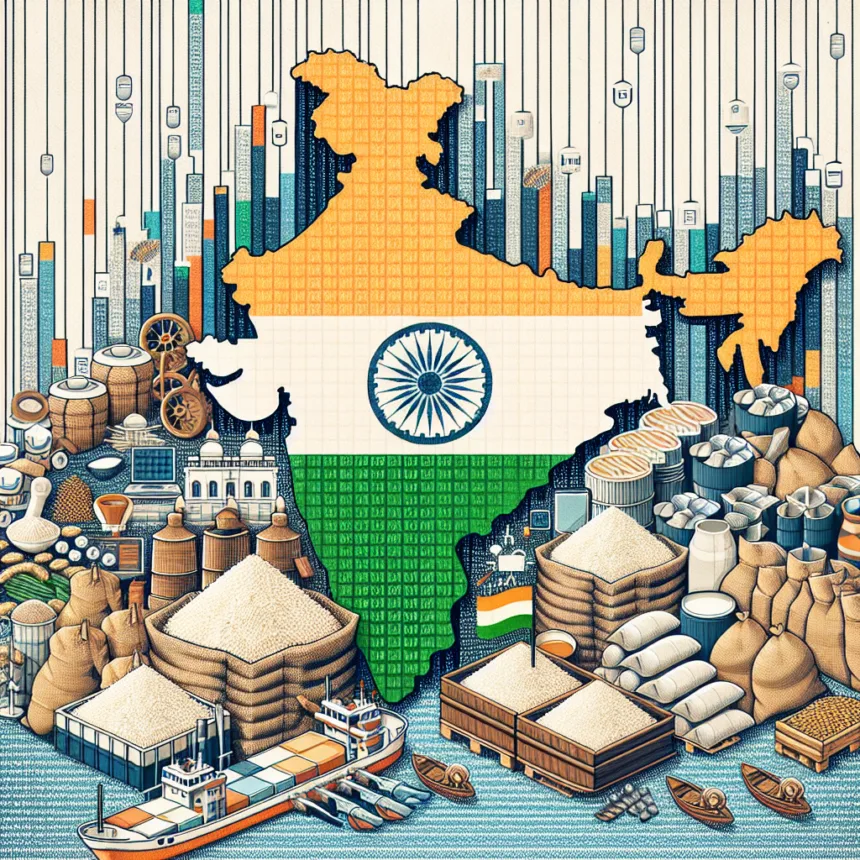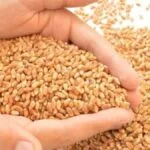Main Points In Hindi (मुख्य बातें – हिंदी में)
-
चावल निर्यात पर ढील: भारत ने उबले चावल के निर्यात पर कर को 20% से घटाकर 10% करने का निर्णय लिया है, जिससे वैश्विक चावल की कीमतों में कमी आ सकती है।
-
खाद्य सुरक्षा और मुद्रास्फीति: भारत ने 2022 में घरेलू खाद्य सुरक्षा सुनिश्चित करने और मुद्रास्फीति पर नियंत्रण पाने के लिए इन निर्यात प्रतिबंधों को लागू किया था, जिसके फलस्वरूप एशियाई बाजारों में उच्चतम चावल की कीमतें देखी गईं।
-
रुपये के निर्यात में गिरावट: हाल के आंकड़ों के अनुसार, भारत से चावल का निर्यात पिछले वर्ष की तुलना में लगभग 25% गिर गया है, जो यह दर्शाता है कि भारत अब रिकॉर्ड भंडार से जूझ रहा है।
-
फसल की स्थिति: भारत के किसानों ने अच्छी बारिश के बाद धान की फसल की कटाई करने में सफलता प्राप्त की है, जिसमें बोई गई फसल की मात्रा पिछले वर्ष की तुलना में बढ़ी है।
- विभिन्न प्रकार के चावल पर शुल्क: सरकार ने बिना मिल वाली चावल पर 10% का निर्यात शुल्क लागू किया है, जबकि अर्ध-मिल्ड और पूर्ण-मिल्ड चावल के लिए कोई शुल्क नहीं रखा गया है।
Main Points In English(मुख्य बातें – अंग्रेज़ी में)
Here are the main points from the provided text:
-
Reduction in Export Restrictions: India has eased restrictions on rice exports, potentially lowering global prices and indicating a shift in domestic agricultural policies following recent national elections.
-
Change in Export Duty: The government has reduced the export duty on boiled rice shipments from 20% to 10%, and also set a 10% duty on non-milled rice, while semi-milled or fully-milled rice exports will incur no levy.
-
Response to Domestic Food Security: Initially, India imposed restrictions to ensure domestic food security and manage inflation, which led to a significant rise in Asian benchmark prices, reaching their highest levels since 2008.
-
Impact of Record Stockpiles: Despite the initial success in stabilizing local prices, India is now facing record stockpiles of rice. The recent policy changes may help reduce excess inventory and lower import costs for countries like Indonesia and Senegal.
- Decline in Rice Exports: India’s rice exports fell by approximately 25% to 5.26 million tons in the first four months of the financial year starting April 1, compared to the previous year, even as farmers reported increased planting after good monsoon rains.


Complete News In Hindi(पूरी खबर – हिंदी में)
भारत ने हाल ही में कुछ चावल निर्यात पर प्रतिबंधों में ढील देने का निर्णय लिया है, जो वैश्विक खाद्य कीमतों को कम कर सकता है और हाल के राष्ट्रीय चुनावों के बाद घरेलू कृषि नीतियों में संभावित बदलाव का संकेत देता है। वित्त मंत्रालय की एक अधिसूचना के अनुसार, सरकार ने उबले चावल के निर्यात पर कर को 20 प्रतिशत से घटाकर 10 प्रतिशत कर दिया है।
भारत, जो कि दुनिया का सबसे बड़ा चावल निर्यातक है, ने घरेलू खाद्य सुरक्षा सुनिश्चित करने और मुद्रास्फीति को नियंत्रित करने के उद्देश्य से 2022 में चावल पर निर्यात प्रतिबंध लगाना शुरू किया था। इससे एशियाई बेंचमार्क पर कीमतें 2008 के बाद के उच्चतम स्तर पर पहुँच गईं और प्रमुख देशों को अन्य स्रोतों से चावल लेने के लिए मजबूर होना पड़ा। यह कदम करोड़ों लोगों के लिए आवश्यक खाद्य पदार्थ के महत्व को दर्शाता है।
हालांकि, इस निर्णय ने स्थानीय बाजार में कीमतों को स्थिर करने में काफी हद तक सफलता प्राप्त की, लेकिन अमेरिकी कृषि विभाग के आंकड़ों के अनुसार, भारत अब रिकॉर्ड मात्रा में भंडार का सामना कर रहा है। नवीनतम नीतिगत निर्णय से इंडोनेशिया और सेनेगल जैसे देशों को इस अधिशेष को कम करने और आयात लागत में कमी लाने में मदद मिल सकती है।
सरकारी आंकड़ों के अनुसार, वित्तीय वर्ष 2023-24 के पहले चार महीनों में भारत से चावल का निर्यात पिछले साल की तुलना में लगभग 25 प्रतिशत गिरकर 5.26 मिलियन टन रह गया है। हालांकि, अच्छी बारिश के बाद भारतीय किसानों ने मानसून में बोई गई धान की फसल की कटाई शुरू कर दी है और एक वर्ष पहले की तुलना में पौधारोपण की दर अधिक है।
इसके अतिरिक्त, शुक्रवार को प्रकाशित अधिसूचना के अनुसार, सरकार ने बिना मिलाई गई किस्म पर 10 प्रतिशत का निर्यात शुल्क निर्धारित किया है, जबकि अर्ध-मिल्ड या पूर्ण-मिल्ड चावल के विदेशी शिपमेंट पर कोई लेवी नहीं लगाई जाएगी। यह कदम भारत के किसानों को समर्थन देने का प्रयास है, वहीं वैश्विक खाद्य बाजार में स्थिरता लाने में भी मदद कर सकता है।


Complete News In English(पूरी खबर – अंग्रेज़ी में)
India has relaxed some rice export restrictions, a move that could reduce global prices and signal changes in domestic agricultural policies following recent national elections.
According to a notification from the Finance Ministry, the government has decreased the export duty on boiled rice shipments from 20% to 10%.
As the world’s leading rice exporter, India began imposing restrictions in 2022 to ensure domestic food security and curb inflation. These measures led Asian benchmark prices to soar to their highest levels since 2008, forcing major consumers to seek supplies from other countries. Rice is a crucial staple for billions of people globally.
While these restrictions have largely succeeded in stabilizing local prices, data from the U.S. Department of Agriculture indicates that India is now grappling with record stockpiles. The latest policy adjustments may help countries like Indonesia and Senegal reduce import costs and manage that surplus.
Government data shows that rice exports from South Asia decreased by about 25% year-on-year, totaling 5.26 million tonnes in the first four months of the financial year that began on April 1.
Following good rainfall, Indian farmers have started harvesting their rice crops, with planting levels up compared to the previous year.
Additionally, the notification published on Friday stipulated a 10% export duty on non-milled varieties of rice, while semi-milled or fully milled rice shipments will not face any levies.
Source link


 By
By 





